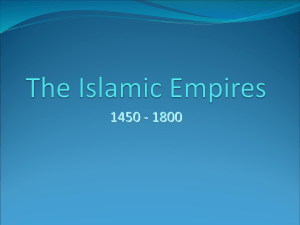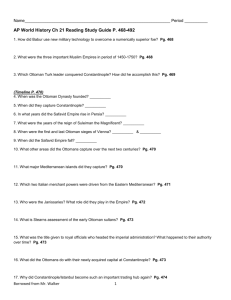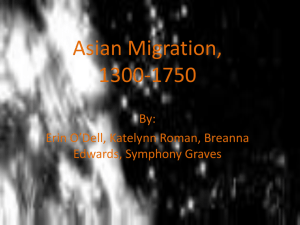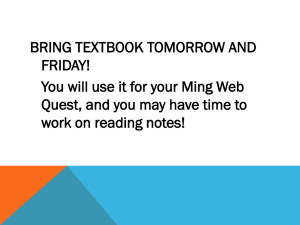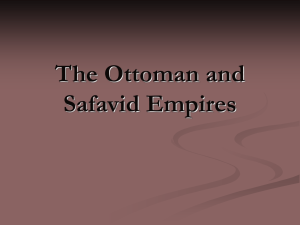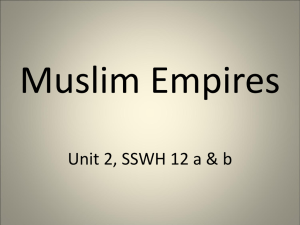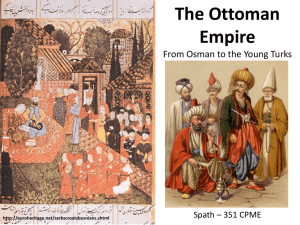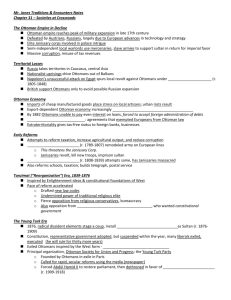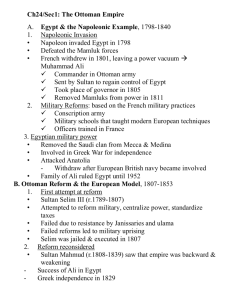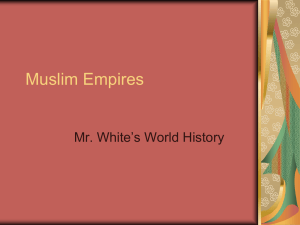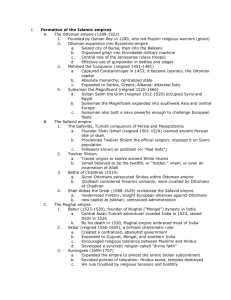Chapter 21 Guiding Questions Introduction This chapter focuses on
advertisement
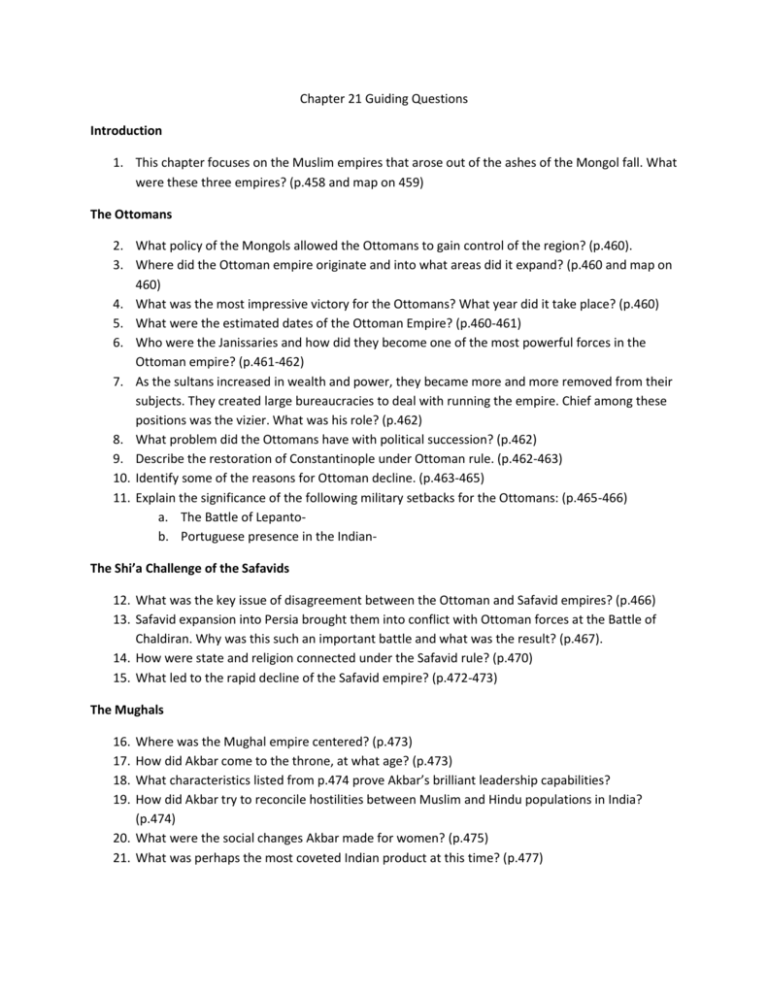
Chapter 21 Guiding Questions Introduction 1. This chapter focuses on the Muslim empires that arose out of the ashes of the Mongol fall. What were these three empires? (p.458 and map on 459) The Ottomans 2. What policy of the Mongols allowed the Ottomans to gain control of the region? (p.460). 3. Where did the Ottoman empire originate and into what areas did it expand? (p.460 and map on 460) 4. What was the most impressive victory for the Ottomans? What year did it take place? (p.460) 5. What were the estimated dates of the Ottoman Empire? (p.460-461) 6. Who were the Janissaries and how did they become one of the most powerful forces in the Ottoman empire? (p.461-462) 7. As the sultans increased in wealth and power, they became more and more removed from their subjects. They created large bureaucracies to deal with running the empire. Chief among these positions was the vizier. What was his role? (p.462) 8. What problem did the Ottomans have with political succession? (p.462) 9. Describe the restoration of Constantinople under Ottoman rule. (p.462-463) 10. Identify some of the reasons for Ottoman decline. (p.463-465) 11. Explain the significance of the following military setbacks for the Ottomans: (p.465-466) a. The Battle of Lepantob. Portuguese presence in the IndianThe Shi’a Challenge of the Safavids 12. What was the key issue of disagreement between the Ottoman and Safavid empires? (p.466) 13. Safavid expansion into Persia brought them into conflict with Ottoman forces at the Battle of Chaldiran. Why was this such an important battle and what was the result? (p.467). 14. How were state and religion connected under the Safavid rule? (p.470) 15. What led to the rapid decline of the Safavid empire? (p.472-473) The Mughals 16. 17. 18. 19. Where was the Mughal empire centered? (p.473) How did Akbar come to the throne, at what age? (p.473) What characteristics listed from p.474 prove Akbar’s brilliant leadership capabilities? How did Akbar try to reconcile hostilities between Muslim and Hindu populations in India? (p.474) 20. What were the social changes Akbar made for women? (p.475) 21. What was perhaps the most coveted Indian product at this time? (p.477) 22. How do Nur Jahan and Mumtaz Mahal embody the opportunities for women of high position to gain power? (p.478) 23. How did the position of women in the rest of Indian society decline? (p.478-479) Terms: Ottoman, Safavid, Mughal Empire, Mehmed II, janissaries, vizier, Red Heads, Chaldiran, Abbas the Great, imams, Mullahs, Isfahan, Babur, Akbar, Din-i-Ilahi, Taj Mahal
